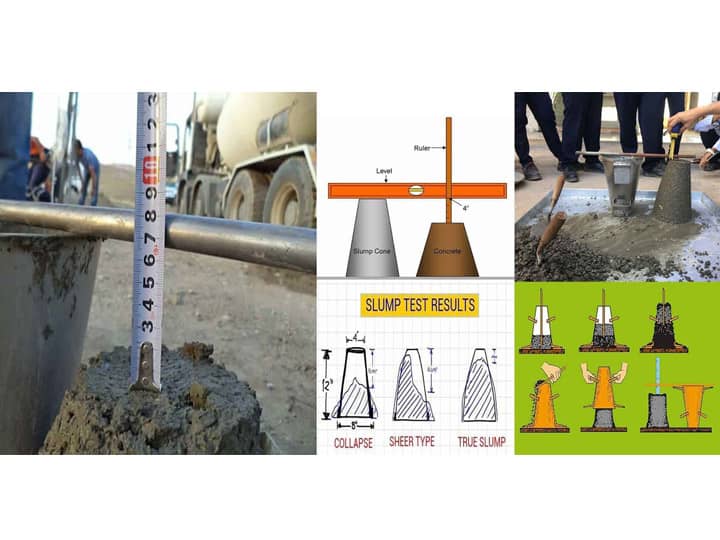What is Concrete Slump Test and How is it Done
What is the Concrete Slump Test?
When you need to quickly measure the workability or fluidity of the concrete mix on site, the best test available is the concrete slump test. This is the best indirect method available to us to test a concrete mix on-site.
A slump test basically determines the consistency or the stiffness of a paste-type mix. When performed on concrete mix, it tells us how much water has been used to make that concrete mix and whether it can be in the given situation or not.
The concrete slump test is very popular for two reasons. One, it is a great method to make sure the consistency of concrete remains the same between batches. Two, it is a very simple test requiring very little in the manner of equipment and training.
Principles of the Concrete Slump Test
A concrete slump test is an empirical testing procedure to determine the workability of a fresh concrete mix. It is used to find out the properties of fresh concrete and lets one understand if the quality of the concrete is the same as the required concrete properties.
The test, in principle, is all about measuring the behavior of concrete when subjected freely to gravity. The concrete is compacted into a conical shape, inverted, and laid to rest on a flat surface. Under the pull of gravity, the concrete slumps downwards to some extent, as all fluids do. Measuring the amount of the slump, that is, the deviation of height between the cone and the sat-down shape, is the direct indicator of the concrete's consistency. Which, in turn, indicates the workability of the concrete.
Equipment required for a slump test
- Slump cone (12" x 8"/4")
- Measuring scale/ruler
- Temping rod, made of steel
Slump test procedure
- a. You need to use a frustum of a cone, measuring 300 mm in height, and 200 mm at bottom sloping to a 100 mm hole at the top.
- b. This container is places on a smooth surface at room temperature. Then it is filled with a fresh concrete mix, in three equal layers.
- c. When pouring each layer, it is temped 25 times with the temping rod. The rod should have a rounded end and be no more than 16 mm in width.
- d. When all of the cone is filled, level off the top of the cone by using the temping rod, gently.
- e. Make sure the mold was held firmly to the base as to not allow any movements.
- f. When the mix is cleaned off the top, slowly and gently lift off the cone in a clear vertical. The concrete beneath will now slump due to the pull of gravity, because it has no outer wall to support it anymore.
- g. Measure the decrease in the height. Do it by placing the cone right beside the slumped concrete and using the temping rod to mark the height difference. Generally, this difference is rounded off to the nearest 5th millimeter.
Precautions to be taken in the concrete slump test
- Concrete has some friction and may stick to the inside of the cone. For this reason, wet the inside of the cone before performing the test.
- Make sure the cone is clean of any dry concrete residue from before.
- Clean the base surface before the test as well, and make sure there are no concrete left around the base of the cone before lifting it off.
Interpreting the slump test results
- Slump 0-25 mm: very low workability, good for road construction.
- Slump 25-50 mm: low workability, good for light foundations.
- Slump 50-100 mm: medium workability, good for flat slabs and heavy reinforcements (with vibration).
- Slump 100-175 mm: high workability, good for highly congested reinforced concrete. Should never be vibrated.
Keep in mind that dry samples and wet samples will produce different slump test results for the same ratio of mix. Also, temperature and humidity have noticeable effects on the slump values. Not to mention the weight and the size of the aggregate used in the concrete mix, and how well the concrete was mixed, all of these will factor in the slump test values.
